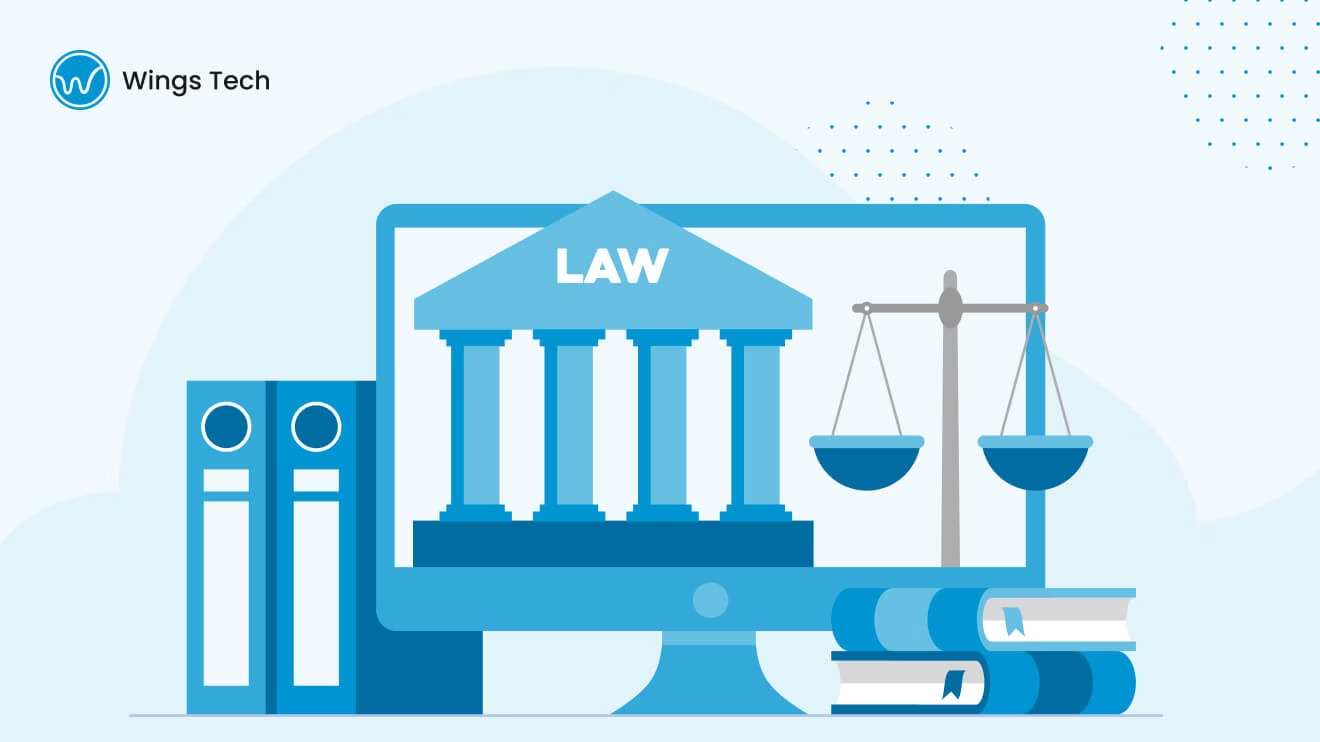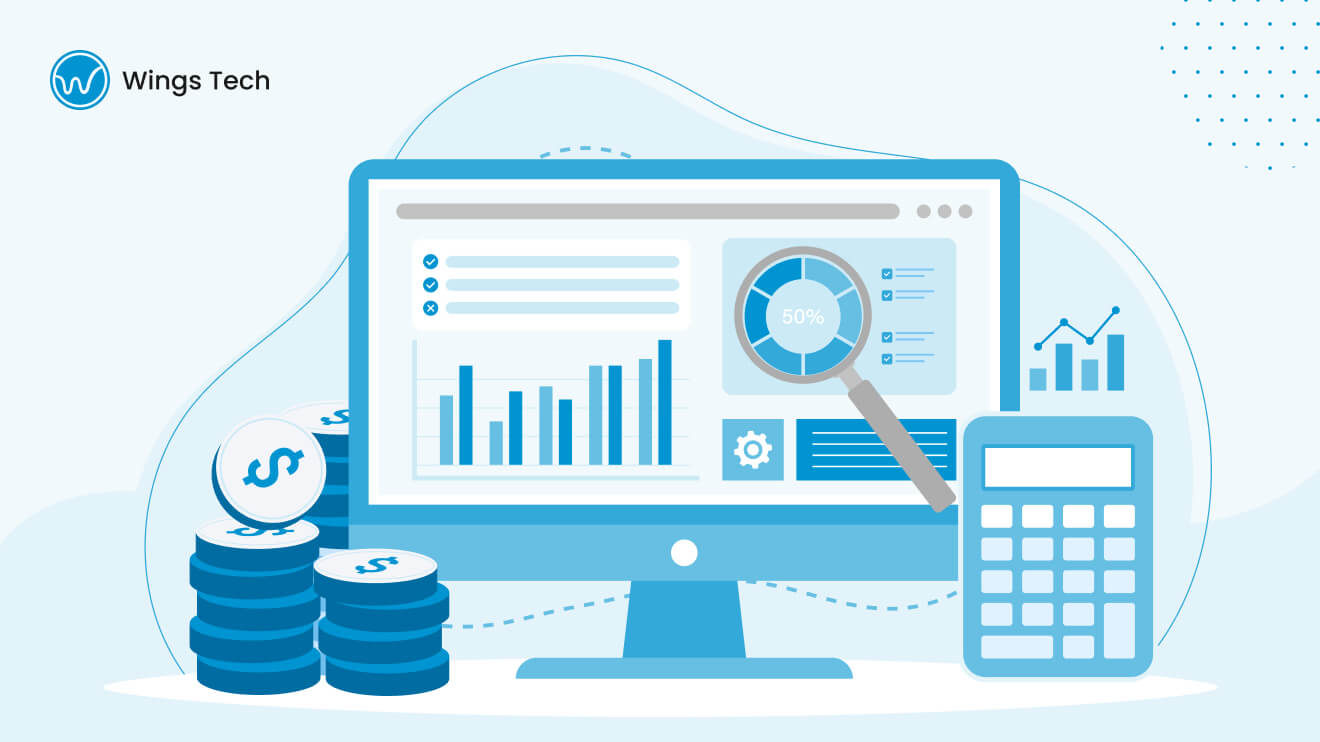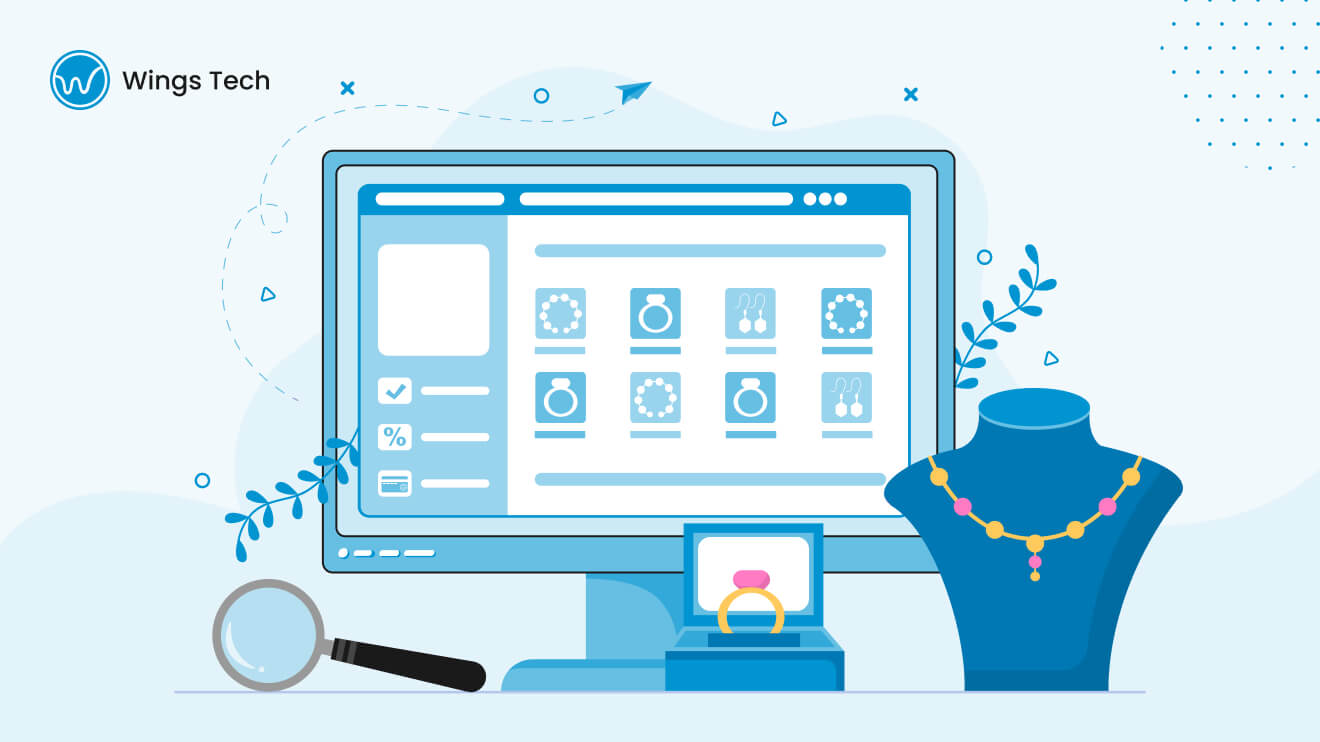Table of Contents
Having a business without an online presence is absurd these days. Therefore, it is crucial to have a solid strategy for custom web application development and focus on it. Given the possibilities, what is web application development? In simpler terms, it’s the design and development of application software that users download from the Internet and operate on a gadget.
Any business owner or company that deals with technology must understand web application development services to use them to scale their business.
What is Web Application Development?
Web application development means designing, coding, and deploying web-centric software applications. The application is built with an end user or a group of users in mind. It offers active web interfaces that are interactive with the browser.
This development process typically involves three main components:
Client-side Development (Frontend): The front end is the side that the user can see in different layouts and interact with using forms and buttons. The goal is to make the user experience as pleasant as possible.
Server-side Development (Backend): The backend handles the business logic, database, server support, and everything required to deploy the application accurately.
Database Management: The database is the backbone of web application development since it enables data to be stored and retrieved.
Difference Between Web Applications and Websites
People are often confused between web applications and websites. Although they both can be accessed through browsers, they are still different.
Websites: Websites include the sites available to the users in a one-way manner. For instance, blogs, a company portfolio, or even a news site. Their function is primarily informational.
Web Applications: These operate in real-time and are interactive. For instance, you can send messages, shop online, or even manage projects. There are also web applications such as Gmail, Slack, and Amazon.
Engaging with web applications is very different from engaging with a website, one being interactive while the other is passive.
Importance of Web Application Development
Greater User Involvement
Once a user logs into a web application, they are bound to stay because it is a customized application with dashboards, forms, notifications, and other features that make them feel valued.
Market Expansion
The application does not confine businesses to locations and time zones; customers and employees can be anywhere worldwide and still access the application at any time.
Improved Business Operations
Certain web applications are created to assist in performing tasks like customer service, monitoring employees, and managing stock automatically. Thus, they minimize physical labor and maximize efficiency.
Improved Customer Experience
For any business, web applications help make responses to queries much faster, navigation easier, and payment procedures smoother. This enhances the customer’s journey and experience with the company.
Saves Cost
Web applications do not require installation on different machines. Instead, they are controlled from a single source, which minimizes maintenance and infrastructure costs, saving businesses a lot of revenue.
Brand Recognition and Credibility
When an application is well designed, it showcases the business and brand professionally, which helps to build trust from its users, which is necessary for the brand.
Competitive Advantage
Through continuous improvement in web application development and delivery, organizations will remain competitive by providing timely and appropriate solutions to customer needs.
Web Application Development Process
When building web applications, it’s wise to follow well-structured step-by-step instructions. It ensures that the end product provides adequate user satisfaction and serves its purpose.
Requirement Analysis and Planning
Start the project with end goals and the aims for the intended application in mind. It helps the developers to:
- Have a clear understanding of the target audience
- Identify the core values of the application
- Establish the preferred technology stack
Design and Prototyping
After all requirements have been outlined, the next phase is the design phase. UI and UX designers will focus on creating a seamless and user-friendly experience for the application’s end-users.
They visualize the layout and flow using wireframes and prototypes. Before coding starts, feedback is gathered to change the design.
Development and Coding
It all starts at the base level of design. It involves:
Frontend Deployment: In this step, skills are directed to things users can see and interact with. These include HTML, CSS, and JavaScript.
Backend Deployment: In this step, developers work on server-side logic, which forms the app’s structure and functionalities. This includes languages such as PHP and Java.
Testing and Quality Assurance
Before launching, testing is done to:
- Identify bugs or errors in the application.
- See if the application is responsive under different conditions.
- Check and fix any security vulnerabilities.
This phase contains manual testing, automation testing, and stress testing.
Deployment and Launch
After the testing phase, the application is moved to the active stage. You’ll have to use hosting services and set up domain names so the application is accessible to users. You can soft launch or perform a beta release to make adjustments.
Maintenance and Updates
After deployment, end users of the services can expect regular additions. It makes an app delivery model highly engaging. Support also contains observation of utilization and extensibility needs.
Web Application Development Frameworks
Frontend Frameworks
React.js
Developed by Facebook, React.js is one of the best component-based UI libraries built for JavaScript. It’s best known for its efficiency and performance with large datasets.
Angular
A robust framework sponsored by Google is ideal for developing rich Internet applications.
Angular also allows for automatically synchronizing data between models and view components.
Vue.js
An open-source and easy-to-navigate framework ideal for developing fast-loading interfaces. Equally suitable for small projects, but extremely fast to scale for large projects.
Backend Frameworks
Django
Highly secure and easily scalable, Django is a web framework powered by Python. It’s often used for complex projects and is convenient for constructing e-commerce websites.
Laravel
The most elusive PHP framework, known for its simple structure and robust functionality, is Laravel. The framework is especially applicable for apps that require heavy user verification and an advanced routing structure.
Express.js
An API framework powered by Node.js with a zero footprint, aimed at constructing fast and strong working applications. The framework is popular for Real-time applications and microservices.
Full-Stack Frameworks
These frameworks apply to front and backend functions, including programming and design.
Ruby on Rails
It is relatively simple and can be developed very quickly. It’s a great development tool, perfect for young companies and MVPs.
Meteor
It’s a framework for the JavaScript programming language that allows stack development in one language. It eases the speed at which various updates or data elements are modified and shared concurrently.
ASP.NET
It is a robust set of Microsoft tools and technology useful for enterprise-level web application development. It includes several languages, such as C# and Visual Basic.
Mobile-First Frameworks
As internet traffic trends move towards mobile, these frameworks are becoming more adaptive to create sites that look good on mobile devices.
Flutter (Web)
A framework endorsed by Google that helps create web applications compiled to run natively on the system. These are fast and easy to use with attractive User Interface (UI) designs.
Bootstrap
It is a CSS framework that makes responsive web design much easier, starting with mobile-first web design. It contains a good selection of templates and components.
Progressive Web App (PWA) Frameworks
PWAs use the browser as their platform, but can be used anywhere to behave like native apps. It empowers developers to build applications with seamless functions across web browsers and devices, giving the experience of a native app. PWAs are accessible through a URL, so the users don’t have to download them. They can still enjoy all features, like offline access, push notifications, and fast performance.
Polymer
Google developed it as a framework to create and reuse better web components. It makes PWA development easier by providing building blocks, ready for application development.
Workbox
Workbox works on improving how good PWAs work through caching and offline capabilities.
Microservices and Serverless Frameworks
Microservices and serverless frameworks have become a trend due to their capabilities to develop modular, easy-to-scale, and efficient web applications.
Spring Boot
This Java-based microservice framework accelerates the process of creating production-ready standalone applications. It offers native features that enable easy cloud installations and cloud application integrations with minimum effort. Businesses that need web apps quickly, without compromising features like scalability and easy configuration, can use Spring Boot as the best option.
Serverless Framework
A Serverless Framework allows developers to work only on the application code without worrying about the infrastructure. This framework is the perfect solution for building low-cost yet scalable applications. Industries including healthcare, education, banking, finance, and others are looking towards this versatile tool to develop their website and mobile apps.
Real-Time Application Frameworks
Some applications, such as messaging apps, collaboration tools, or live-tracking systems, require real-time updates. Such functions are essential for these types of applications, and they are sometimes referred to as ‘real-time.’
Socket.IO
It is beneficial for server-side apps where one wants to create client- and server-dependent applications. It is also used in chat applications, online games, and collaborative editors.
Phoenix
This powerful web framework, built with Elixir, is designed for creating fast, scalable, real-time applications. It offers excellent performance, handles errors efficiently, and makes it easy to manage updates.
Best Practices for Web Application Development
Focus on User Experience (UX)
No application should be complicated, and web applications should certainly not be. Therefore:
- Develop a minimalist design that is responsive and user-friendly on all devices.
- Improve site performance to increase impact.
Ensure Security
Web apps are susceptible to risks like losing data or hacking the system. You can:
- Create ports or connections to steer clear of unsecured sites’ data transmission.
- Implement authorization controls such as OAuth or multi-factor authentication.
- Regularly update the software to fix loopholes.
Implement Agile Development Methodologies
Agile methods focus on flexibility, incremental progress, and teamwork. For instance, you can complete all tasks that slow the project by dividing it into small portions and finishing them.
Optimize for Scalability
As the number of users increases, the application should accommodate the flow without barriers.
Utilize vast computing services, which include AWS and Google Cloud. Adopt a microservices architecture for an easily expandable design.
Use Version Control Systems
With tools like Git, developers can change code, eliminate bugs, and create new features without losing previous app versions.
Better Accessibility Standards
Web applications need to be designed and developed with everyone in mind. Standards such as WCAG help developers create applications that are more accessible to specific groups of people, such as those living with disabilities, with features like screen reader support, keyboard, and font size allowances.
It is beneficial in achieving inclusiveness and dramatically improves the overall user experience for bigger demographic.
Adopt the DevOps Approach
DevOps improves the development cycle and helps increase speed and collaboration. With CI/CD pipelines, users can receive application updates and fixes faster, and the deployment processes do not impact the quality of the application. Integrating different tools can give live statistics about the application and users’ activities.
Automate Testing
Tests are important, but quality can be compromised due to their time-consuming nature. However, with automation integration, recording and engaging in the tests can be easily accomplished. For instance, you can use Selenium for front-end testing.
Monitor Performance Regularly
The role of web application developers doesn’t end with making a web application live. The real challenges may come after deployment. So, performance-adjusting features should be activated to get data and feedback. Some applications, such as Google Analytics and New Relic, can provide insight into the application’s performance.
Ensure Cross-Browser Compatibility
Test your application on different browsers to ensure its cross-browser compatibility with Chrome, Safari, and Edge.
Document Everything
Well-written documentation makes it easier for developers to manage and modify the application. It includes:
- API documentation for integrations.
- Guidelines for future developers.
What Does the Future of Web Application Development Look Like?
Web application development is constantly changing, and keeping up to date is indispensable. The future of AI may look like this:
AI Integration
Once deployed, features such as chatbots, personalized recommendations, and analytics will not surprise you. Applications will also use AI more often to improve user interactions and automate processes.
Focus on Accessibility
Future web apps will be designed for easy accessibility, enabling everyone to use them regardless of disabilities. Technologies like voice and screen reading would be universal.
Increased Use of Progressive Web Apps (PWAs)
PWAs would allow users to experience the best of both the web and native applications while also being able to function offline. Due to their oscillating capabilities and application performance, they would be dependable apps.
Serverless Architecture & Microservices
These technologies are likely the mainstays of web application development by increasing flexibility, lowering costs, and increasing deployment speed.
5G and Beyond
The rollout of fifth-generation mobile networks is expected to accomplish faster load speeds, more effective logistics management, and stronger applications.
Integration of Blockchain Aspects
Web applications have begun using blockchain, especially in securing transactions in the finance and healthcare sectors. From secure transactions to decentralized apps, blockchain will redefine web development.
Heightened Customization with Big Data
The concept of big data will provide web applications with much-needed personalization. Applications will use users’ preferences and behavior to offer recommendations and content that suit them, thus unlocking more engagement.
Augmented Reality (AR) and Virtual Reality (VR)
The growing abilities of AR and VR technologies will allow mainstream web applications to have mouthwatering features in areas like retail, gaming, and education. They are already revolutionizing the sales and marketing operations. Highly customized assistance based on the user’s behavior and an easier and smoother decision-making experience are the key benefits of AI and VR.
Sustainability Prioritization
Energy-efficient programming and green web hosting services are increasingly becoming a key agenda for developers striving to mitigate interruptions caused by their web applications.
How Wings Tech Can Help You with Web Application Development
With multiple web application development projects, we have amassed extensive experience and provide clients with exactly what they need. So, if you are looking for a web application to boost your business, Wings Tech is your go-to solution.
Why Choose Wings Tech?
Well-Qualified Staff
Wings Tech is home to talented developers, designers, and strategists who collaborate and work to offer modern solutions.
You are provided with experts from the beginning through the end. They assist in defining the business objectives and adopting new technologies and frameworks.
Customer-oriented
We start with your company’s problems and goals. Every app is designed to assist you with specific goals.
We craft uniquely tailored features for your needs. Our team ensures that the program is superior to existing tools and platforms.
We visualize responses per the company’s concept and values.
Diverse Portfolio
Wings Tech has extensive experience and an exceptional portfolio in delivering completed projects in various sectors, including Healthcare, e-commerce, and Education.
Use of Modern Frameworks
We start with the client’s needs at the center and use cutting-edge technologies to develop reliable and scalable applications, from beautiful user interfaces to fast server solutions.
Scalability and Future-proofing
Your business will grow and expand, and so will your requirements. Our Wings Tech team designs applications while considering future growth and expansion. Your web app will have strong frames that easily accommodate future modifications and additions of features.
We build a composite code base that will grow with the organization.
End-to-End Services
Wings Tech Assists throughout the entire development lifecycle, including design, planning, coding, testing, maintenance, and support after launch.
Our Core Offerings Include:
Custom Web Applications
Non-commercial, client-centric web application developments that make you different from your competitors.
Progressive Web Apps (PWAs)
Web-based programs that function offline as well and load very quickly.
E-commerce Solutions
Powerful shopping platforms that improve the ease of purchase for customers.
Enterprise Web Applications
Practical applications to enhance internal processes and productivity.
Conclusion
Now you know what is web application development. Many businesses have started investing in web application development, naturally creating web applications that are more user-friendly, targeted, and functional. The primary goals of every business are to:
- Increase user engagement.
- Optimize business operations.
- Increase audience volume and increase brand awareness.
Working with a trustworthy web application development business guarantees a favorable process and outcome, whether you are beginning a new project or wish to improve your existing solution.
Wings Tech is dedicated to crafting creative, modifiable applications that meet your business requirements.
Want to see your idea transformed into a high-powered web application? Turn to Wings Tech to help you start with a roaring digital presence!









